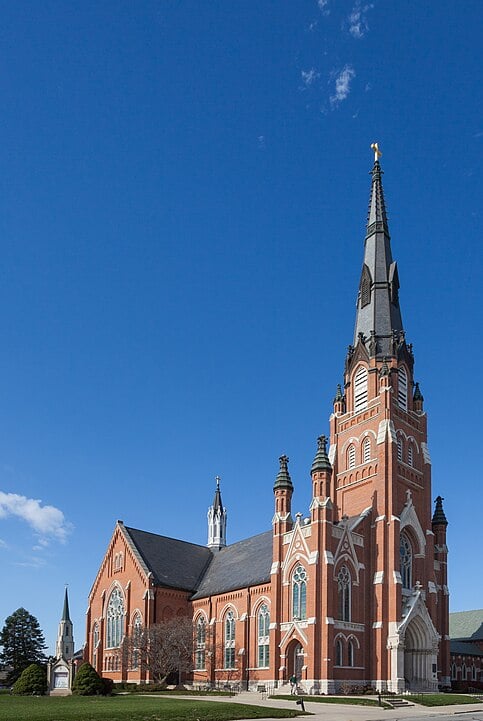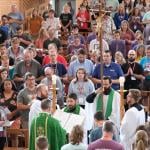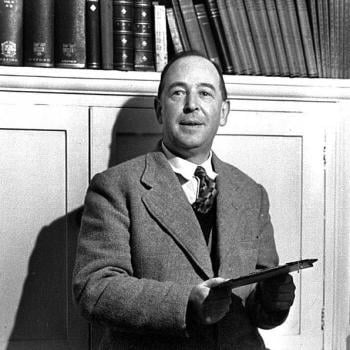A study has found that “confessional” Lutheran congregations (traditional, liturgical, doctrinal) attract more converts (both to Christianity and to Lutheranism from other traditions) than “missional” Lutheran congregations (church-growth, contemporary worship, evangelical).
This is so counter-intuitive that it will surprise both sides. But these are the findings of the Lutheran Religious Life Survey that we discussed in a recent post.
The researcher behind this initiative is Lyman Stone, a research fellow for the Institute of Family Studies and the Canadian Christian think tank Cardus. A convert to the Lutheran Church Missouri Synod himself from a nondenominational church, Stone is a real demographer. I have seen his name and research pop up frequently in the national media. His ongoing research on the LCMS will be housed at Concordia University Nebraska.
His findings are based on some 2,000 surveys that were returned by LCMS members. He sent out surveys to the various mailing lists that were available from various Lutheran ministries, including the pastors and church workers in the LCMS directory. So this is not a true random sampling that would be necessary for fully reliable data, and yet it is better than I thought it was. He did get data from “missional” congregations, and, in fact, he says that large churches were “over-represented.”
“Broadly speaking,” Stone says, “the survey over-represented people with high frequency of church attendance, pastors, higher-income people, young men, married people, and people from larger churches. By weighting against these categories, the final weighted sample is likely to be a closer approximation of the true LCMS population.” That is, he assigned different statistical weight to the various groups according to the demographics of the synod.
At any rate, even if more research is necessary to fully establish these findings, which I believe Stone is pursuing, the results are still telling. And, at the very least, he gives information about the converts themselves–how and why they became Christians or became Lutherans–that is significant in itself, beyond the question of which kind of church was more effective in reaching them.
So here are some of his bottom-line findings, as given in the report Those Who Are Being Saved: Report on the Results of the 2023 Lutheran Religious Life Survey (go here and scroll down past the one about pastors, which is also worth reading, to the second of the reports) [my bolds]:
• About 3% of LCMS members are converts from outside of Christianity, 8% from other non Lutheran Christian backgrounds, and 20% from other Lutheran or similar denominations.
• “Confessional” churches receive more converts than “Missional” churches, and “Traditional” churches receive more converts than “Contemporary” services. Smaller LCMS churches in rural areas or small towns receive higher rates of converts than large urban or suburban congregations. Younger converts to the LCMS are also much likelier to be women than lifelong LCMS members of the same age.
• Exposure to LCMS primary and secondary schooling is a major factor shaping conversion: many people become LCMS due to their experiences in LCMS schools, and LCMS children enrolled in LCMS schools may have higher rates of remaining LCMS.
• Large shares of LCMS members experienced serious religious doubts at age 18 or earlier, and in particular about 2/3 of converts into the LCMS from non-Christian backgrounds experienced serious doubts in their prior faith before age 30. About 10% of lifelong LCMS members experienced serious religious doubts before age 16.
• Conversion into the LCMS is most commonly associated with individuals finding a welcoming community which provides a sense of connection to history, and/or converts arrive via a romantic connection to an LCMS member. About 1/3 of converts into the LCMS experienced romantic attachments as a key element of their conversion, and an additional 1/3 were largely motivated by a search for community. A conviction that prior beliefs were wrong was only the primary influence on about 1 in 5 converts.
• More liturgical churches, and churches that respondents identify as “Confessional and Traditional,” not only receive more converts, but are experiencing less severe declines in attendance and membership, and may have younger membership profiles.
First of all, Stone concludes, rounding up the decimal points, that about 32% of the membership of the LCMS are “converts”; that is, they came into the denomination from the outside, either as non-Christians who came to faith or as members of other traditions who embraced Lutheranism. That’s nearly a third of our members who are not “cradle Lutherans,” which is more than one might expect.
(To be clear, Lutherans do believe that all Christians undergo a “conversion” whenever they repent of their sins and turn to Christ through the Gospel. This is not a one-time only event as in evangelicalism, but a continual part of the Christian life. Some people also experience a conversion when they are first awakened to faith by the Holy Spirit through the Gospel. See the Apology to the Augsburg Confession, articles IV, VI, XII; and the Formula of Concord, article II of the Epitome, and article III of the Solid Declaration. This study uses the term both in this sense, for an unbeliever who comes to faith, and in a broader sense, for changing from one version of Christianity to Lutheranism.)
The overall percentage of non-believers who became Christians is about 3%. One wishes it were more, but evangelism is happening. For every hundred members, three of them had been non-Christians. That’s significant. Says Stone,
The vast majority of converts from non-Christian backgrounds end up in “Traditional” LCMS churches, and about 3 times as many self-identify as “Confessional” than as “Missional,” a much bigger disparity than LCMS members generally. In other words: converts from outside of Christianity disproportionately end up in “Confessional and Traditional” churches within the LCMS. That said, overall prevalences are low: only about 2-4% of LCMS members are converts from non-Christian backgrounds.
Most LCMS converts have come from “similar” traditions. Stone defines those as other Lutheran denominations, such as the liberal ELCA, or Anglicanism. Says Stone,
“Confessional” or “Traditional” LCMS churches also have a greater density of converts from other Lutheran backgrounds, such as ELCA or WELS. “Traditional” LCMS churches have almost twice times as many converts from other branches of Lutheranism than “Contemporary” LCMS churches. Throughout the LCMS, perhaps 10 to 20% of members are converts from other Lutheran church bodies.
Interestingly, those who come to the LCMS from other Christian traditions are more evenly distributed among both “Confessional” and “Missional” congregations. Says Stone, “converts from other Protestant bodies, Roman Catholicism, and Eastern Orthodoxy do not display a strong association with any LCMS subculture.”
But why do all of these people convert to the LCMS? Let’s look at that tomorrow. Again, there are some surprises.
Photo: St. Paul Lutheran Church, Fort Wayne, IN by Diego Delso, CC BY-SA 3.0, https://commons.wikimedia.org/w/index.php?curid=22923304














